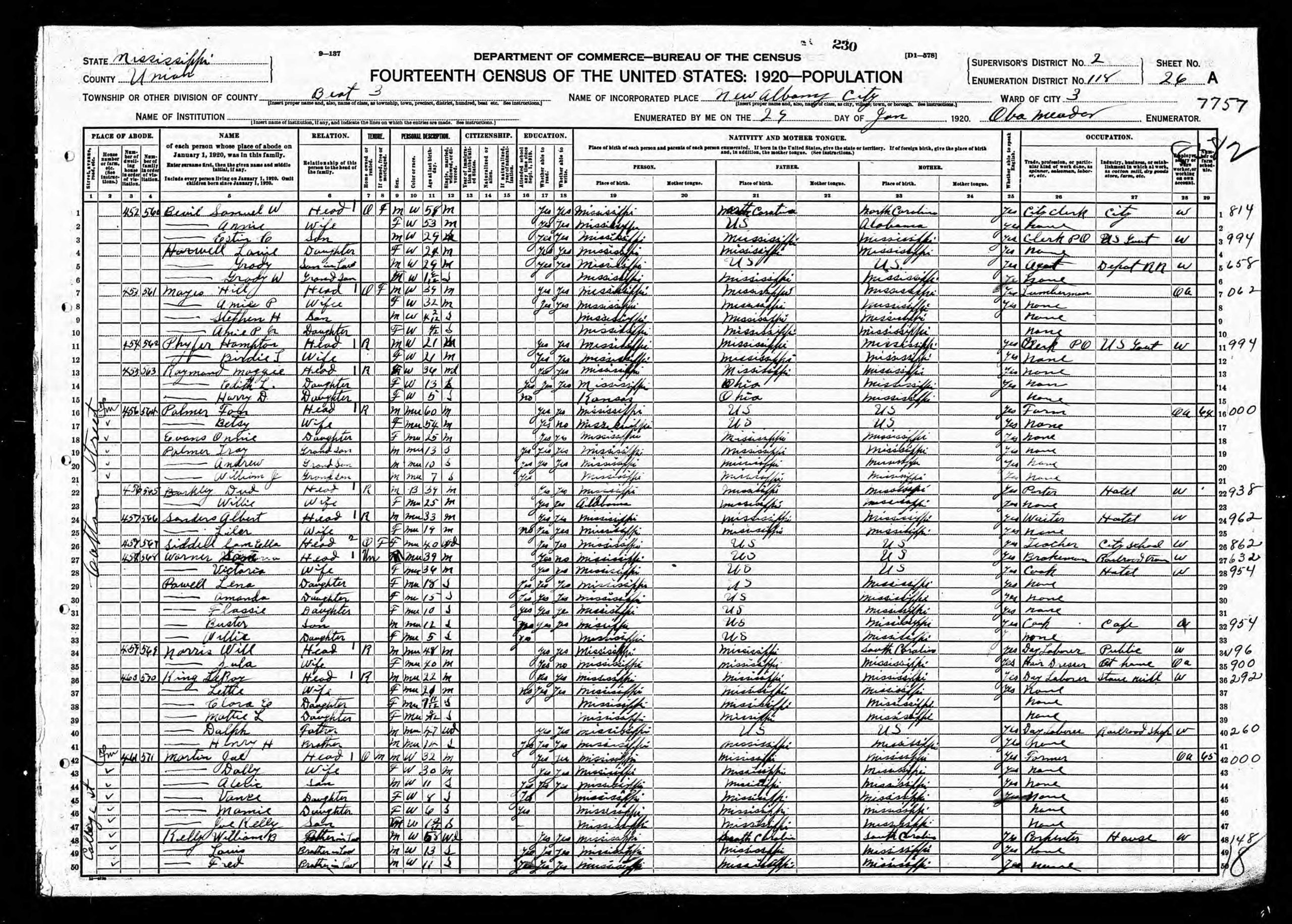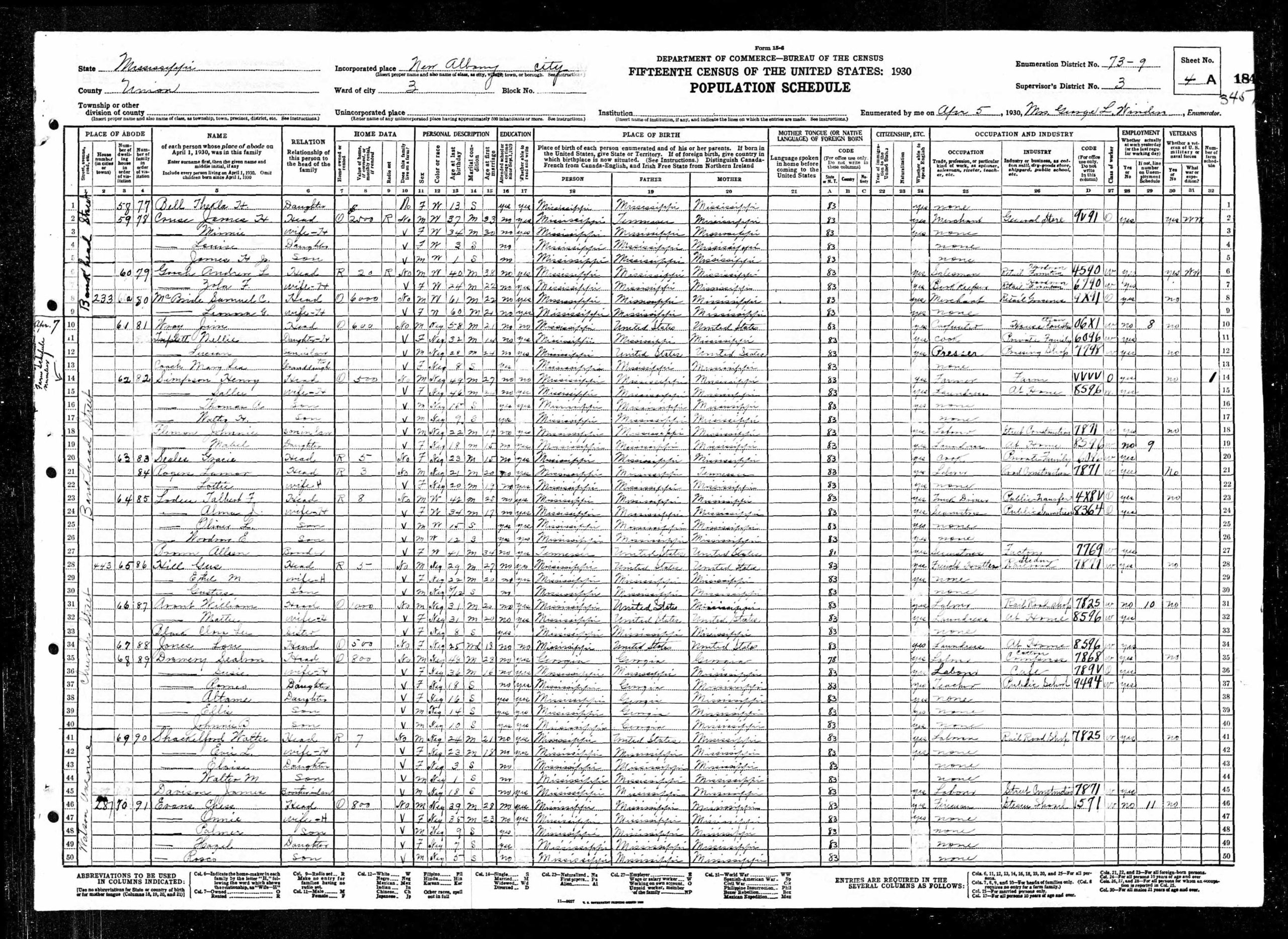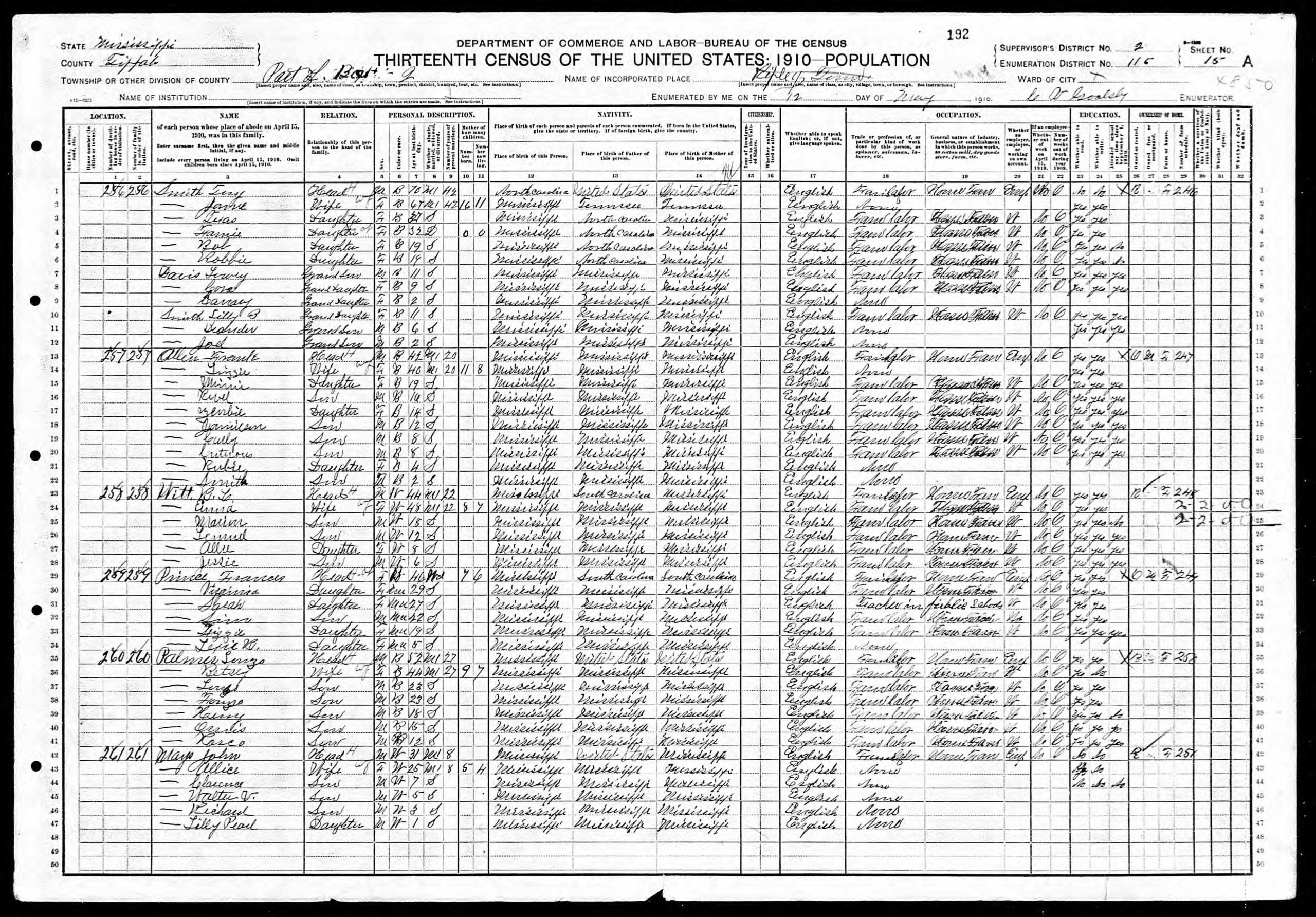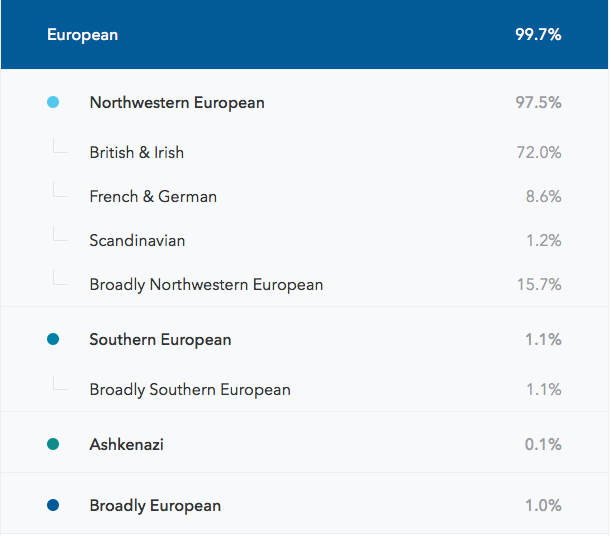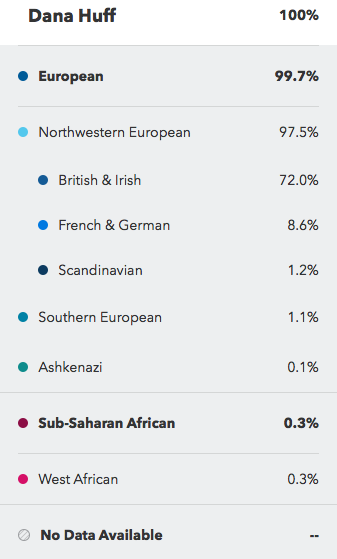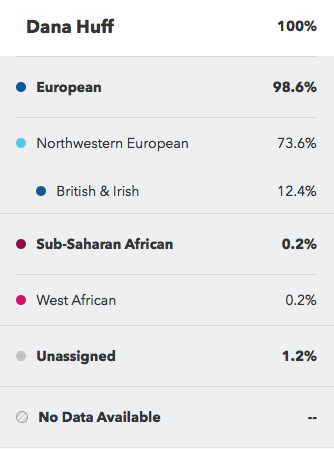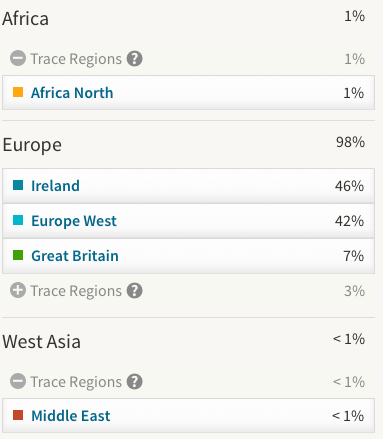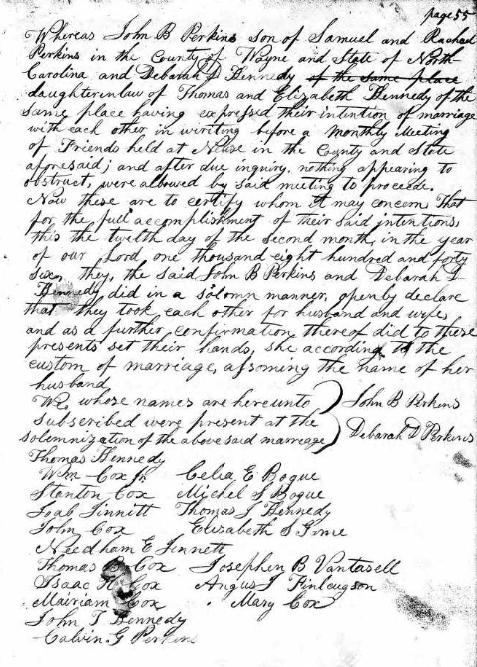As I alluded to in my previous post, I’m hoping to learn more about the people wrongfully enslaved by my ancestors. Slavery makes it extremely difficult for many people to trace their family histories, as their ancestors’ names often appeared nowhere on documents. They might be enumerated on Slave Schedules, census records that counted the numbers of enslaved people, who were listed by age and gender under the names of the slave owners.
I chanced upon two remarkable documents connected with my ancestor Randolph Eubanks Palmer. He was a planter in Tippah County, Mississippi. This small article was featured in the Vicksburg Daily Whig on March 21, 1856.
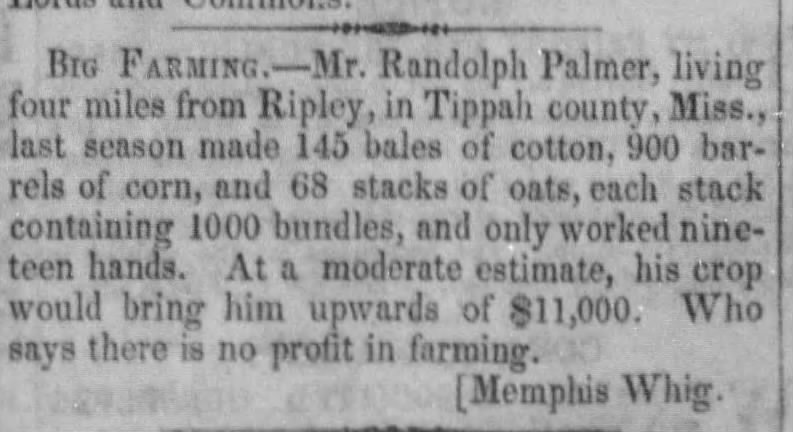
A quick transcription in case you find the article difficult to read:
BIG FARMING.—Mr. Randolph Palmer, living four miles from Ripley, in Tippah county, Miss., last season made 145 bales of cotton, 900 barrels of corn, and 68 stacks of oats, each stack containing 1000 bundles, and only worked nineteen hands. At a moderate estimate, his crop would bring him upwards of $11,000. Who says there is no profit in farming.
Memphis Whig.
A Slave Schedule for Tippah County in 1850 indicates that Randolph Eubanks Palmer claimed ownership of 21 human beings. In 1860, he claimed ownership of 28 human beings. According to a fellow researcher (unfortunately, I’m not sure who originally shared the information), a handwritten document with the ages of enslaved people born after 1851 through 1862 or 1863 was found in a trunk in the Palmer home. Here is an image of the document:
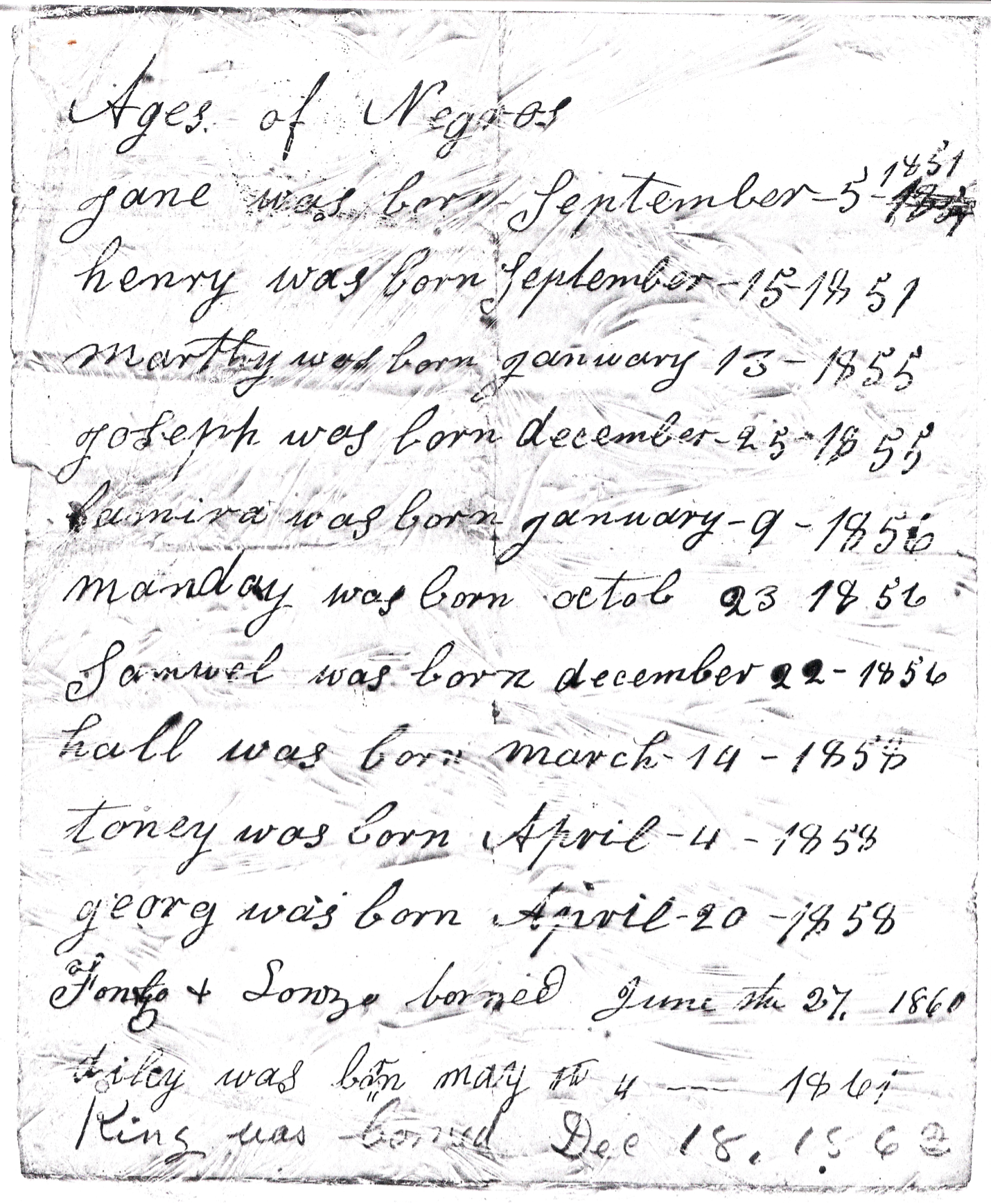
A transcription (original spelling and capitalization retained):
Ages of Negros
Jane was born September-5-1851 (unreadable year scratched out)
Henry was born September-15-1851
Marthy was born January 13*-1855 Â Â Â Â Â [*possibly 18]
Joseph was born december-25-1855
Samira* was born January-9-1856Â Â Â Â [*I can’t make out this name definitively]
Manday was born Octob 23 1856
Samuel was born december 22-1856
hall was born march-14-1858
toney was born April-4-1858
georg was born April-20-1858
Fonzo & Lonzo borned June the 27. 1860
dilcy was born may th 4—1861
King was borned Dec 18. 1862*Â Â Â Â Â Â Â [*possible 1863]
This is the kind of document that is invaluable to Black Americans researching their family histories, but unfortunately, when White enslavers think to document such information, they rarely, if ever, think to share such information.
I wanted to find out if this document could possibly be genuine. On the list, two names jumped out at me: apparent twins Fonzo and Lonzo born on June 27, 1860. The names are distinctive enough, I thought, that I might be able to do some digging and actually find them. Their names also reminded me of Alonzo “Fonny” Hunt in James Baldwin’s book If Beale Street Could Talk.
I decided quite on a whim to start with Fonzo, and I found him and his mother and siblings on the 1870 Census for Tippah County, living near other Black families with the last name Palmer and also Randolph Eubanks Palmer, Jr., the son of Randolph Eubanks Palmer. I suspect Fonzo and his family were sharecropping on the land where they had formerly been enslaved, which was a common occurrence following emancipation and the end of the Civil War.
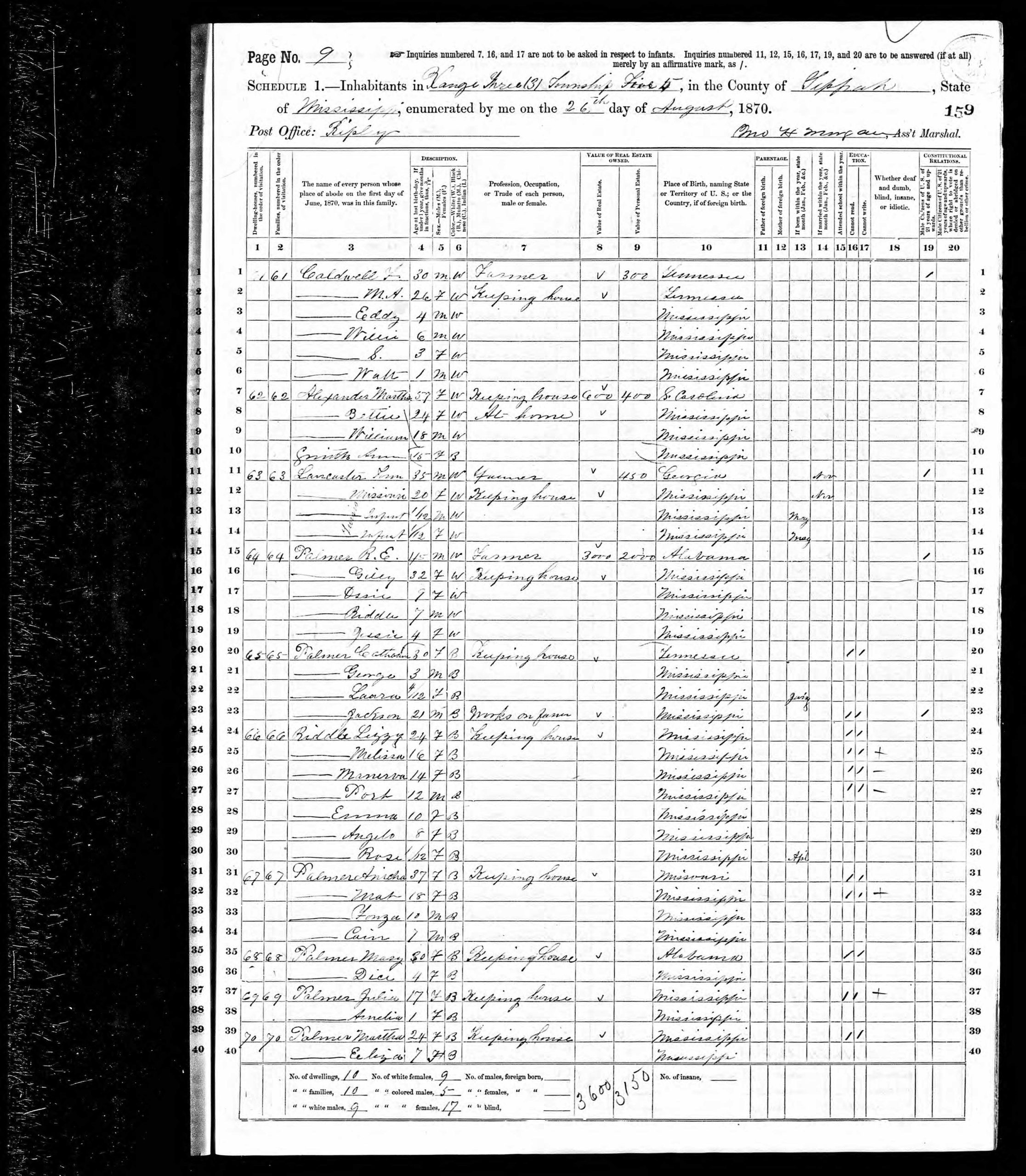
Transcription of pertinent information:
Palmer, Amelia?, Age: 37, Gender: Female, Race: Black, Occupation: Keeping House, Birthplace: Missouri [could be a mistake], Cannot read or write.
Palmer, Mat or Mar, Age: 17, Gender: Female, Race: Black, Birthplace: Mississippi; Cannot read or write [note: there is a + sign in the column labeled “Whether deaf, dumb, blind, insane or idiotic”]
Palmer, Fonzo, Age: 10, Gender: Male, Race: Black, Birthplace: Mississippi
Palmer, Cain, Age: 7, Gender: Male, Race: Black, Birthplace: Mississippi
His mother’s name is difficult to read, and it was transcribed as Anicha, but my guess is that it was actually Amelia. She is 37 on the 1870 Census, meaning she was likely born around 1833. She would have been about 27 on the 1860 Slave Schedule, and there were two women who were 25 listed under Randolph Palmer’s name. There were many other candidates older and younger as well. Fonzo was not listed with Randolph Palmer on the 1860 Slave Schedule but a two-month-old male child is listed with Randolph’s son John D. Palmer. It’s hard to say if Fonzo was not enumerated or if he was enumerated with Randolph’s son John. In any case, there is not a woman close to the age of 27 enumerated among the people enslaved by John Palmer.
The other two children listed with Fonzo’s mother appear to be Mar or Mat and Cain. I believe that Cain is probably King, born on December 18, 1862 or 1863 above. If Cain is King, then the date above is probably December 18, 1862. Mar or Mat could be Marthy above, who was born January 13 or 18, 1855, but if so, then her age on the 1870 Census is incorrect, which wouldn’t be terribly unusual given the difficulty of keeping records for enslaved people. If Mar or Mat is Marthy, then she would have been 15, according to the Palmers’ reckoning (well within a margin of error).
I was not able to find Lonzo, and I suspect he may have died before the 1870 Census. I next traced Fonzo to the 1880 Census.
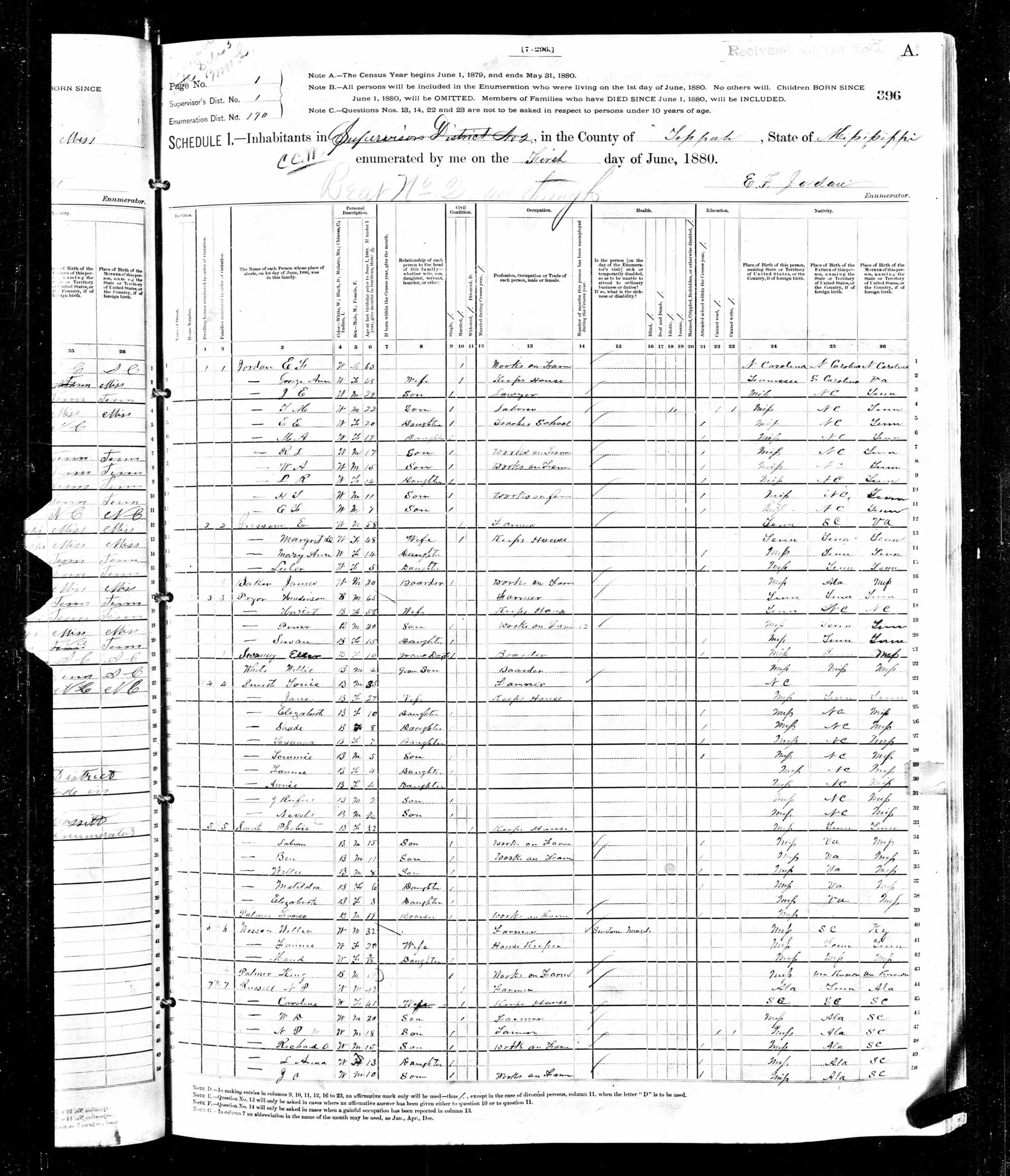
Transcription of pertinent information:
Palmer, Fonso, Race: Black, Gender: Male, Age: 19, Relationship to Head of House: Boarder, Marital status: Single, Occupation: Works on Farm, Did attend school within the census year, Birthplace: Mississippi, parents birthplaces unlisted.
Fonzo is a boarder in the household of Phebie Smith. King Palmer appears a few lines beneath Fonzo:
Palmer, King. Race: Black, Gender: Male, Age: 19, Marital status: Single, Occupation: Works on Farm, Birthplace: Mississippi, parents’ birthplaces listed as “Unknown.”
It’s possible that King Palmer either didn’t know his age or his age was given incorrectly. There is a round mark next to his name that looks like the census-taker was trying to swap lines, but it’s unclear to me if King Palmer was working for the White family Wesson or Wasson that appears above him or the White family Russell that appears below him. In any case, Fonzo and King’s mother may have died. I was not able to find her again on the Census. It’s also possible she married and had a different last name. I will keep digging to see what I can find.
I was extremely happy and surprised at how far I was able to trace Fonzo Palmer. I will share more of his story in my next post. I believe the list of names is a genuine document that lists the names of people born into slavery on the Palmers’ plantation (or farm) from 1851 to 1862 or 1863 and that two or possibly three children—including Fonzo—of an enslaved woman possibly named Amelia were among those whose births were listed.



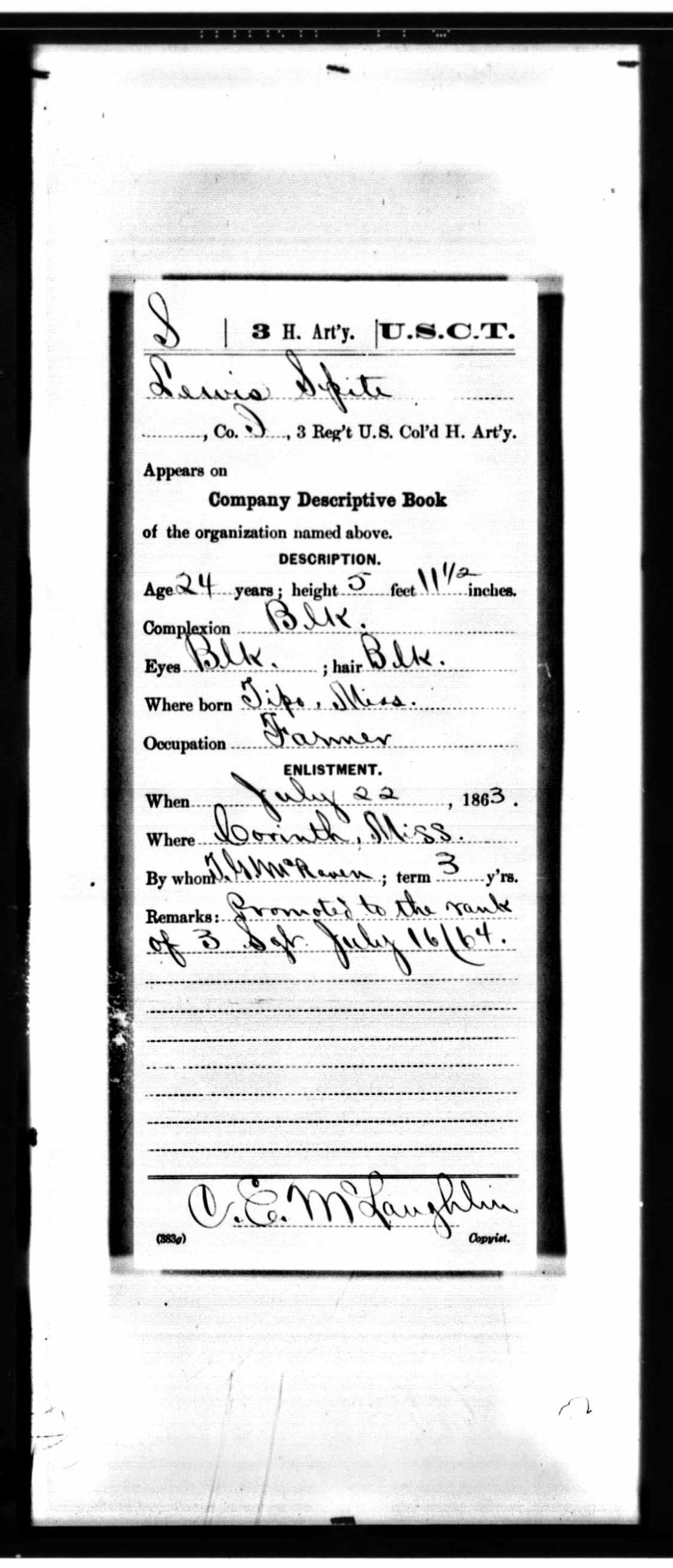
![[District of Columbia. Company E, 4th U.S. Colored Infantry, at Fort Lincoln]](https://genealogy.danahuff.net/wp-content/uploads/2023/06/service-pnp-cwpb-04200-04294r.jpg)
